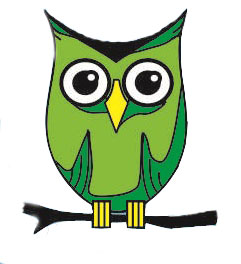Design of RBL-STEM learning model through analysis of chitosan making from crab shell waste in improving students' metacognition
Abstract
Keywords
Full Text:
PDFReferences
Simamora, M., Siburian, J. & Gardjito. Analisis kemampuan metakognisi siswa dalam pembelajaran biologi melalui assesment pemecahan masalah di SMA Negeri 5 Kota Jambi. FKIP Universitas Jambi (2014).
Gita, R. & Waluyo, J. On the shrimp skin chitosan STEM education research-based learning activities: obtaining an alternative natural preservative for processed meat. IOP Conf. Ser.: Earth Environ. Sci. 747, 012123 (2021). https://doi.org:https://doi.org/10.1088/1755-1315/747/1/012123
Mashuni, M., Natsir, M., Lestari, W. M., Hamid, F. H. & Jahiding, M. Pemanfaatan kitosan dari cangkang kepiting bakau (Scylla serrata) dengan metode microwave sebagai bahan dasar kapsul obat. ALCHEMY Jurnal Penelitian Kimia 17, 74-82 (2021). https://doi.org:https://doi.org/10.20961/alchemy.17.1.42038.74-82
Aji, A. & Meriatna, M. Pembuatan Kitosan Dari Limbah Cangkang Kepiting. Jurnal Teknologi Kimia Unimal 1, 79-90 (2012).
Nurmaliah, C. & Khairil, K. Analisis keterampilan metakognisi siswa dengan penerapan strategi pembelajaran pemberdayaan berpikir melalu pertanyaan pada siswa SMP Negeri 2 Banda Aceh. Prosiding Seminar Nasional Biotik 5 (2018).
Kristiani, N. Hubungan Keterampilan Metakognitif dan Hasil Belajar Kognitif Peserta didik pada Pembelajaran Saintifik dalam Mata Pelajaran Biologi SMA Kurikulum 2013. Seminar Nasional XII Pendidikan Biologi FKIP UNS (2015).
Setyawati, O. I. & Fitakurahmah, N. Profil keterampilan metakognitif siswa pada pembelajaran biologi secara online di masa pandemi covid-19. Bio-Pedagogi: Jurnal Pembelajaran Biologi 11, 25-31 (2022). https://doi.org:https://doi.org/10.20961/bio-pedagogi.v11i1.51652
Jayawardana, H. & Afandi, A. The usage of chitosan from shrimp waste as natural preservative for fish cilok (Traditional Food in Indonesia). Indonesian Journal of Science and Education 3, 1-9 (2019).
DOI: https://doi.org/10.26555/symbion.11695
Refbacks
- There are currently no refbacks.
Copyright (c) 2023 H.B.A Jayawardana

This work is licensed under a Creative Commons Attribution-ShareAlike 4.0 International License.

Symbion organized by
Deparment of Biology Education
Faculty of Teacher Training and Education
Universitas Ahmad Dahlan, Yogyakarta
Campus 4 UAD Jl. Ringroad Selatan, Kragilan, Tamanan, Banguntapan, Bantul,
Special Region of Yogyakarta, 55191